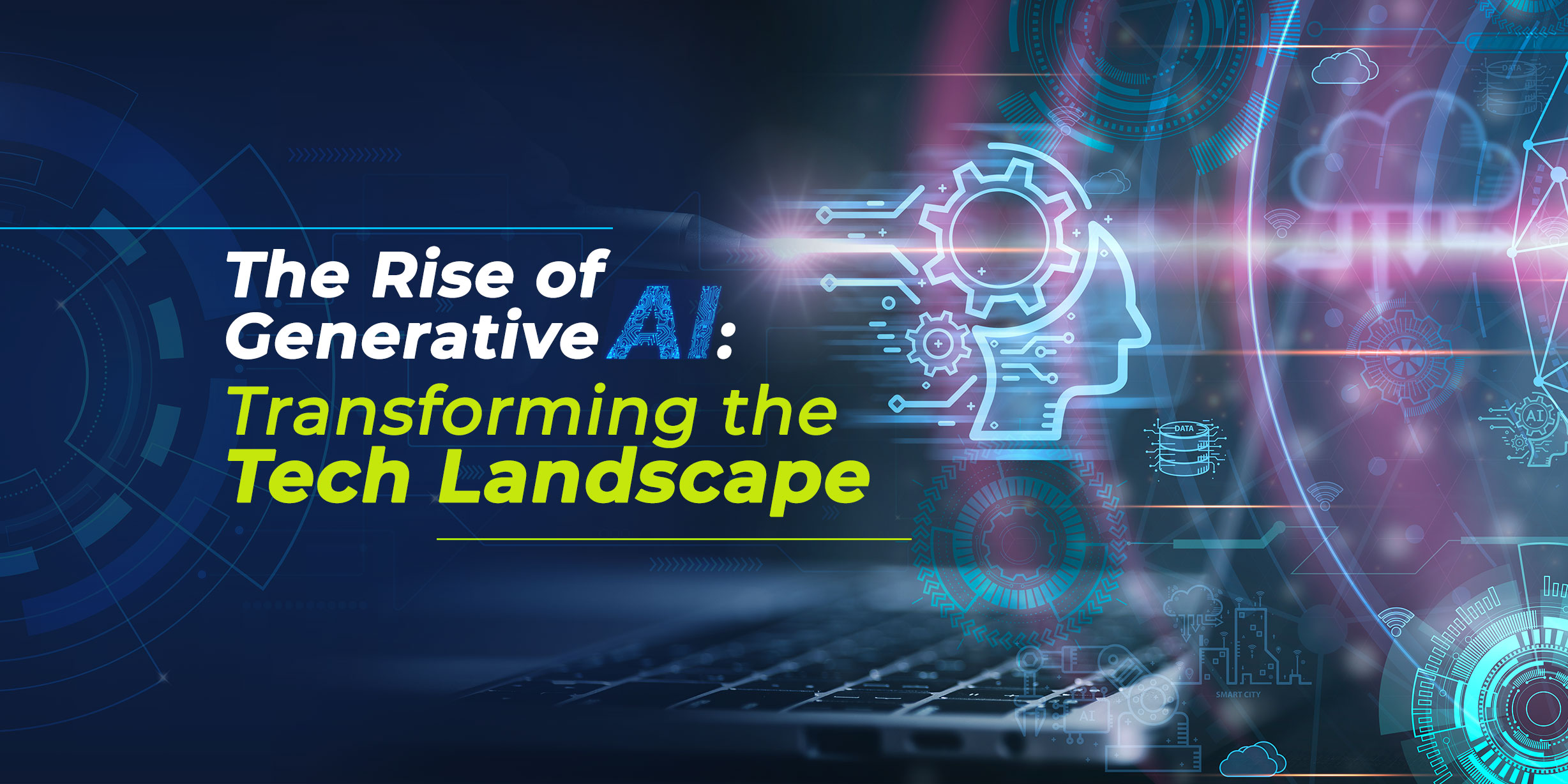Popularized by the 2022 deep learning model DALL-E 2, generative AI is poised to be a game-changer for the tech landscape and for industries that rely on it to function.
DALL-E 2 could “create” images based on a simple text prompt, just like human beings can create audio, visual, or text content on a specific topic. That is the core value proposition of generative AI – i.e., generating something out of seemingly nothing to reduce the human effort involved in creative work. As we previously discussed, this has immense implications for the mortgage sector.
Read More: What’s the Buzz Around AI TRiSM?
Why Is Generative AI a Game-Changing Technology?
Generative AI is essentially an umbrella term for machine learning algorithms that can assimilate data from existing content (images, video, audio, or text) to create digital assets that feel completely original. To do this, generative AI uses a wide range of artificial intelligence techniques, such as machine learning, deep learning, generative adversarial networks, and large language models.
This highly complex functionality is entirely hidden behind a conversational interface. The user simply enters a prompt into the UI, and the artificial intelligence engine generates an original output in response. In some cases – such as ChatGPT – generative AI can work in an interactive manner, which is another reason why it is so revolutionary. It does away with the routine, fixed-flowchart conversational systems that we are used to with traditional chatbots and makes interactions more fluid.
Expectedly, generative AI is all set to have a transformative impact across nearly every sector, starting with content creation and marketing. Writers and designers can now quickly generate a first draft based on a prompt or a specific idea, and then only work on refining the generative AI’s output.
The catch? The technology can be extremely expensive to both train and operate. Training a large language model like ChatGPT could cost over $4 million. A similar generative AI model by Meta used over 2,000 NVIDIA GPUs to train, with each GPU costing several thousands of dollars. Further, the cloud storage typically needed to host the computing resources for generative AI incurs additional costs.
The State of Generative AI Today
Despite the obvious costs and scalability challenges, interest in generative AI is booming. In a recent Salesforce survey, 67% of IT leaders said that they are prioritizing generative AI adoption in the next 18 months; 1 in 3 named it their top priority. Over half of senior IT professionals call it a game-changer that can help them better serve customers, make better use of data, and become more efficient.
At the same time, the industry is also worried about security risks (79%) and bias (73%). Nearly 3 in 4 respondents agree that the technology would significantly increase their carbon footprint.
However, there is no doubt about generative AI’s transformative impact, much like the effects of automation, the cloud, or even the internet when these technologies were first introduced. An Accenture survey found that it will impact jobs across 20+ categories, from legal and compliance to financial operations and administrative support. Importantly, financial operations like mortgage are among the top five industries that will witness the most impact from generative AI.
Read More: 5 Reasons Why the Mortgage Industry Needs Smart Data Fabrics
Generative AI and Augmented Reality
While ChatGPT tends to dominate the conversation around generative AI, its real potential is much more expansive. This is because the technology comes at a time when Web 3.0 development is underway, and immersive experiences and the metaverse are topics of interest.
In the metaverse, immersive worlds reflect the physical reality around us; generative AI could spontaneously create virtual reality and augmented reality designs to populate these new online spaces. Snap (the company behind SnapChat), recently hinted at augmented reality glasses that could be powered by generative AI. What does this mean for businesses?
For one, combining generative AI and augmented reality will help in site analysis. This is because of AI’s predictive capability, strengthened by hours of deep learning and ML training. For example, an AR solution powered by generative AI can visualize how a building’s position and design would affect exposure to the sun and local weather patterns. This can inform decisions around construction, real estate purchases, and valuation, to build better mortgage data models.
Similarly, augmented reality can leverage artificial intelligence to find and correct existing issues in a building structure. This could support property preservation needs. Ultimately, the two technologies will fuel a kind of interactive design approach where data constantly inspires new models and projections that are visually presented.
How to Get Started with Generative AI Technology?
The scalable implementation of generative AI in mortgage and the financial services sector is still a few quarters away. However, businesses can start preparing by building their cloud capabilities and also realigning their culture.
The pervasive use of generative AI – indeed, much of its transformational impact – comes from the fact that it changes what we consider to be human ability and machine efficiency. Tasks that were previously performed by human executives (e.g., formulating a borrower persona based on previous patterns, market intelligence, and human judgment) can now be shared by machines. It is vital that companies start preparing for this massive cultural shift.
At Nexval, we work with top mortgage companies on greenfield and brownfield digital transformation projects, reducing your in-house burden and costs. Our team of industry experts, as well as technical professionals, can help you build a strong foundation for new technology adoption, be it augmented reality, generative AI, blockchain, or the metaverse.
Speak to our Tech Gurus to know more.



